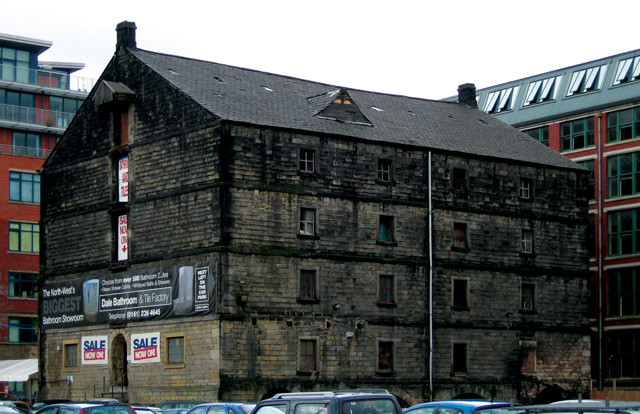
by Sam Lemonick Friday, December 18, 2015

Urban grime, as seen here in Manchester, England, is a mixture of thousands of chemical compounds. Credit: Pete Birkinshaw, CC by 2.0.
Cities are dirty. That’s obvious from all the grime that collects on glass, metal and other urban surfaces. But new research shows that not everything in that grunge is staying put at ground level, and that the grime — and the nitrogen in it — is contributing to air pollution in ways scientists aren’t accounting for.
Most of the nitrogen in urban grime is present as nitrate — a nitrogen-oxygen ion that’s a common component in fertilizers, but may also be formed by atmospheric reactions of nitrogen dioxide, which originates from automobile exhaust, power plants, heaters and other sources that burn fossil fuels. Nitrogen dioxide formed by this combustion is a pollutant in its own right, but it reacts with sunlight and oxygen in the atmosphere to form ozone, a major component of photochemical smog. (Ozone in Earth’s stratosphere helps to block dangerous ultraviolet light, but closer to the ground it is harmful to human, plant and animal health.)
Through an innovative field test, Jamie Donaldson of the University of Toronto with graduate student Alyson Baergen and colleagues at the atmospheric chemistry institute TROPOS, in Leipzig, Germany, have shown that sunlight causes nitrogen pollutants to be released back into the air from urban grime. A similar effect was already known to occur very slowly in water, as well as in snow and ice, but scientists have assumed that the slow nature of the release meant that these nitrogen compounds essentially stayed trapped in grime on city surfaces until rain or humans washed them away.
In Liepzig, Donaldson and his team set out trays of glass beads to collect grime over a six-week period. While some beads sat in the sun, others were shaded. At the end of the experiment, the grime on the shaded beads contained about 10 percent more nitrate than the beads in the sun. That means that nitrate on the sunlit beads was being converted back into gases and was being lost back to the air.
Ten percent “doesn’t sound like a big deal,” Donaldson says. But “remember that the molecules that are forming the nitrate on the surface are constantly being deposited,” which means that a lot of the nitrogen that was thought to be sequestered in grime is continuously being pumped back into the atmosphere. Donaldson presented his group’s research in August at a conference of the American Chemical Society.
“This is just a starting point of a potentially big story, because no one is dealing with urban grime when people are discussing urban air pollution,” says Christian George, a chemist at the University of Lyon in France who was not involved with the new study.
Currently, climate and atmospheric quality models assume that urban grime is a sink for nitrogen. The same is true of air-quality ratings, for which nitrogen dioxide is a key indicator. Now that the new research has shown the nitrogen compounds can return to the air, some scientists say we need to rethink the assumptions that underlie these models.
Donaldson’s work is changing the way researchers think about urban surfaces, says Amanda Grannas of Villanova University, who was not involved in the new study. “No one’s been thinking about these interfaces as a place where chemistry is happening,” she says. “I’m sure when we walk by buildings and skyscrapers we’re not thinking of them as chemical reaction vessels. … Even as an atmospheric chemist it’s not something that was on my radar.”
Donaldson has so far limited his studies to grime on glass because glass is largely inert, he says. Other materials found in cities, like metal and concrete, can participate in chemical reactions, making it harder to figure out what exactly is liberating the nitrogen.
Whereas his experiment in Liepzig lasted six weeks, he currently has a similar test running in Toronto that is set to last for a year. And he’s working with a researcher in China to potentially replicate the study there to better understand the effects different amounts or kinds of urban pollution might have.
© 2008-2021. All rights reserved. Any copying, redistribution or retransmission of any of the contents of this service without the expressed written permission of the American Geosciences Institute is expressly prohibited. Click here for all copyright requests.